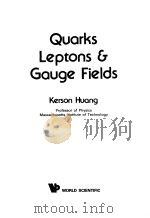《Quarks and leptons an introductory course in modern particle physics》
| 作者 | Francis Halzen ; Alan D. Dougl 编者 |
|---|---|
| 出版 | Wiley |
| 参考页数 | 396 |
| 出版时间 | 1984(求助前请核对) 目录预览 |
| ISBN号 | 0471887412 — 求助条款 |
| PDF编号 | 813867368(仅供预览,未存储实际文件) |
| 求助格式 | 扫描PDF(若分多册发行,每次仅能受理1册) |
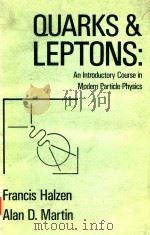
1A Preview of Particle Physics1
1.1 What is the World Made of?,1
1.2 Quarks and Color,4
1.3 Color: The Charge of Nuclear Interactions,7
1.4 Natural Units,12
1.5 Alpha (α) is not the Only Charge Associated with Particle Interactions,14
1.6 There Are Weak Interactions, Too,21
1.7 Down Mendeleev’s Path: More Quarks and Leptons,26
1.8 Gravity,27
1.9 Particles: The Experimentalist’s Point of View,28
1.10 Particle Detectors,30
2Symmetries and Quarks33
Symmetries and Groups33
2.1 Symmetries in Physics: An Example,33
2.2 Symmetries and Groups: A Brief Introduction,35
2.3 The Group SU(2),39
2.4 Combining Representations,40
2.5 Finite Symmetry Groups: P and C,41
2.6 SU(2) of Isospin,41
2.7 Isospin for Antiparticles,42
2.8 The Group SU(3),43
2.9 Another Example of an SU(3) Group: Isospin and Strangeness,44
Quark “Atoms”46
2.10 Quark- Antiquark States: Mesons,46
2.11 Three-Quark States: Baryons,50
2.12 Magnetic Moments,55
2.13 Heavy Quarks: Charm and Beyond,57
2.14 Hadron Masses,63
2.15 Color Factors,67
3 Antiparticles70
3.1 Nonrelativistic Quantum Mechanics,71
3.2 Lorentz Covariance and Four-Vector Notation,72
3.3 The Klein-Gordon Equation,74
3.4 Historical Interlude,75
3.5 The Feynman-Stuckelberg Interpretation of E < 0 Solutions,77
3.6 Nonrelativistic Perturbation Theory,79
3.7 Rules for Scattering Amplitudes in the Feynman-Stuckelberg Approach,82
4 Electrodynamics of Spinless Particles84
4.1 An “Electron” in an Electromagnetic Field Aμ,84
4.2 “Spinless” Electron-Muon Scattering,86
4.3 The Cross Section in Terms of the Invariant Amplitude ?,88
4.4 The Decay Rate in Terms of ?92
4.5 “Spinless” Electron-Electron Scattering,92
4.6 Electron- Positron Scattering: An Application of Crossing,93
4.7 Invariant Variables,94
4.8 The Origin of the Propagator,97
4.9 Summary,99
5The Dirac Equation100
5.1 Covariant Form of the Dirac Equation. Dirac γ-Matrices,102
5.2 Conserved Current and the Adjoint Equation,103
5.3 Free-Particle Spinors,104
5.4 Antiparticles,107
5.5 Normalization of Spinors and the Completeness Relations,110
5.6 Bilinear Covariants,111
5.7 Zero-Mass FermionsThe Two-Component Neutrino,114
6Electrodynamics of Spin-1/2 Particles117
6.1 An Electron Interacting with an Electromagnetic Field Aμ,117
6.2 Moller Scattering e- e- → e- e-,119
6.3 The Process e- μ- →’ e- μ- ,121
6.4 Trace Theorems and Properties of γ-Matrices,123
6.5 e- μ- Scattering and the Process e+ e- → μ+ μ-,123
6.6 Helicity Conservation at High Energies,126
6.7 Survey of e-e+ →e- e+, μ- μ+,129
6.8 e- μ- → e- μ- in the Laboratory Frame. Kinematics Relevant to the Parton Model,130
6.9 Photons. Polarization Vectors,132
6.10 More on Propagators. The Electron Propagator,135
6.11 The Photon Propagator,137
6.12 Massive Vector Particles,138
6.13 Real and Virtual Photons,139
6.14 Compton Scattering γe-→ γe-,141
6.15 Pair Annihilation e+ e- → γγ144
6.16 The + iε Prescription for Propagators,145
6.17 Summary of the Feynman Rules for QED,150
7 Loops, Renormalization, Running Coupling Constants,and All That152
7.1 Scattering Electrons Off a Static Charge,152
7.2 Higher-Order Corrections,154
7.3 The Lamb Shift158
7.4 More Loops: The Anomalous Magnetic Moment,159
7.5 Putting the Loops Together: Ward Identities,162
7.6 Charge Screening and e-μ- Scattering,163
7.7 Renormalization,163
7.8 Charge Screening in QED: The Running Coupling Constant,167
7.9 Running Coupling Constant for QCD,169
7.10 Summary and Comments,171
8The Structure of Hadrons172
8.1 Probing a Charge Distribution with Electrons. Form Factors,172
8.2 Electron-Proton ScatteringProton Form Factors,175
8.3 Inelastic Electron-Proton Scattering ep → eX,179
8.4 Summary of the Formalism for Analyzing ep Scattering,183
8.5 Inelastic Electron Scattering as a (Virtual) Photon-Proton Total Cross Section,184
9 Partons188
9.1 Bjorken Scaling,188
9.2 Partons and Bjorken Scaling,191
9.3 The Quarks Within the Proton,196
9.4 Where Are the Gluons?,202
10 Quantum Chromodynamics205
10.1 The Dual Role of Gluons,205
10.2 Embedding γ*-Parton Processes in Deep Inelastic Scattering,208
10.3 The Parton Model Revisited,209
10.4 The Gluon Emission Cross Section,210
10.5 Scaling Violations. The Altarelli-Parisi Equation,215
10.6 Including Gluon Pair Production,219
10.7 Complete Evolution Equations for the Parton Densities,220
10.8 Physical Interpretation of the P Functions,221
10.9 The Altarelli-Parisi Techniques Also Apply to Leptons and Photons: The Weizsacker-Williams Formula,224
11e + e - Annihilation and QCD226
11.1 e-e+ Annihilation Into Hadrons: e-e+→ qq-,226
11.2 Fragmentation Functions and Their Scaling Properties,230
11.3 A Comment on Heavy Quark Production,234
11.4 Three-Jet Events: e-e+→ qq-g,234
11.5 An Alternative Derivation of the e-e+→ qq-g Cross Section,238
11.6 A Discussion of Three-Jet Events,240
11.7 QCD Corrections to e-e+→ Hadrons,243
11.8 Perturbative QCD,245
11.9 A Final Example: The Drell-Yan Process,247
12Weak Interactions251
12.1 Parity Violation and the V-A Form of the Weak Current,252
12.2 Interpretation of the Coupling G,256
12.3 Nuclear β-Decay,258
12.4 Further Trace Theorems,261
12.5 Muon Decay,261
12.6 Pion Decay,264
12.7 Charged Current Neutrino-Electron Scattering,267
12.8 Neutrino-Quark Scattering,271
12.9 First Observation of Weak Neutral Currents,276
12.10 Neutral Current Neutrino-Quark Scattering,277
12.11 The Cabibbo Angle,279
12.12 Weak Mixing Angles,283
12.13 CP Invariance?,287
12.14 CP Violation: The Neutral Kaon System,289
13Electroweak Interactions292
13.1 Weak Isospin and Hypercharge,292
13.2 The Basic Electroweak Interaction,295
13.3 The Effective Current-Current Interaction,298
13.4 Feynman Rules for Electroweak Interactions,299
13.5 Neutrino-Electron Scattering,302
13.6 Electroweak Interference in e+e Annihilation,305
13.7 Other Observable Electroweak Interference Effects,308
14Gauge Symmetries311
14.1 The Lagrangian and Single-Particle Wave Equations,311
14.2 Noether s Theorem: Symmetries and C onscrvation Laws,314
14.3 U(1) Local Gauge Invariance and QED,316
14.4 Non-Abelian Gauge Invariance and QCD,317
14.5 Massive Gauge Bosons?,320
14.6 Spontaneous Symmetry Breaking: “Hidden” Symmetry,321
14.7 Spontaneous Breaking of a Global Gauge Symmetry,324
14.8 The Higgs Mechanism,326
14.9 Spontaneous Breaking of a Local SU(2) Gauge Symmetry,327
15The Weinberg-Salam Model and Beyond331
15.1 Electroweak Interactions Revisited,331
15.2 Choice of the Higgs Field,334
15.3 Masses of the Gauge Bosons,335
15.4 Masses of the Fermions,338
15.5 The Standard Model: The Final Lagrangian,341
15.6 Electroweak Theory is Renormalizable,342
15.7 Grand Unification,344
15.8 Can the Proton Decay?,349
15.9 The Early Universe as a High-Energy Physics Experiment,352
15.10 “Grander” Unification?,354
Answers and Comments on the Exercises355
Supplementary Reading377
References381
Index385
1984《Quarks and leptons an introductory course in modern particle physics》由于是年代较久的资料都绝版了,几乎不可能购买到实物。如果大家为了学习确实需要,可向博主求助其电子版PDF文件(由Francis Halzen ; Alan D. Dougl 1984 Wiley 出版的版本) 。对合法合规的求助,我会当即受理并将下载地址发送给你。
高度相关资料
-

- LINEAR ANALYSIS AN INTRODUCTORY COURSE
- 1990 CAMBRIDGE UNIVERSITY PRESS
-

- ELECTRIC FILTER CIRCUITS AN INTRODUCTORY COURSE
- 1963 ISAAC PITMAN AND SONS LTD.
-
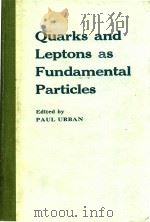
- QUARKS AND LEPTONS AS FUNDAMENTAL PARTICLES
- 1979 SPRINGER-VERLAG
-
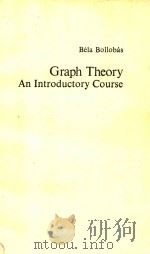
- GRAPH THEORY AN INTRODUCTORY COURSE
- 1979 SPRINGER-VERLAG
-
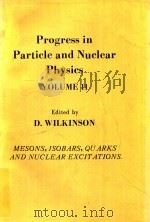
- PROGRESS IN PARTICLE AND NUCLEAR PHYSICS VOLUME 11
- 1984 PERGAMON PRESS
-

- CAMEL XIANGZI
- 1981 FOREIGN LANGUAGES PRESS
-
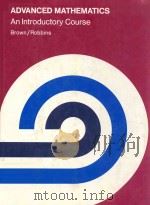
- ADVANCED MATHEMATICS AN INTRODUCTORY COURSE
- 1981 HOUGHTON MIFFLIN COMPANY BOSTON
-
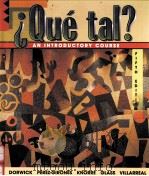
- IQUE TAL? AN INTRODUCTORY COURSE
- 1999 MCGRAW-HILL
-
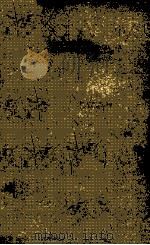
- REAL ANALYSIS AN INTRODUCTORY COURSE
- 1972 JOHN WILEY & SONS AUSTRALASIA PTY LTD
-

- MODERN ILLUSTRATIVE BOOKKEEPING INTRODUCTORY COURSE
- 1900 AMERICAN BOOK COMPANY
-

- AN INTRODUCTORY COURSE OF MATHEMATICAL ANALYSIS
- 1926 AT THE UNIVERSITY PRESS
-

- AN INTRODUCTORY COURSE IN PURE MATHEMATICS
- 1958 GEORGE G. HARRAP AND CO. LTD.
-
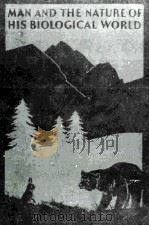
- AN INTRODUCTORY COURSE IN SCIENCE FOR COLLEGES II
- 1934 GINN AND COMPANY
-
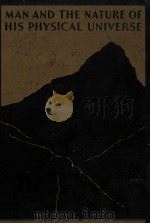
- AN INTRODUCTORY COURSE IN SCIENCE FOR COLLEGES I
- 1934 GINN AND COMPANY
提示:百度云已更名为百度网盘(百度盘),天翼云盘、微盘下载地址……暂未提供。➥ PDF文字可复制化或转WORD
